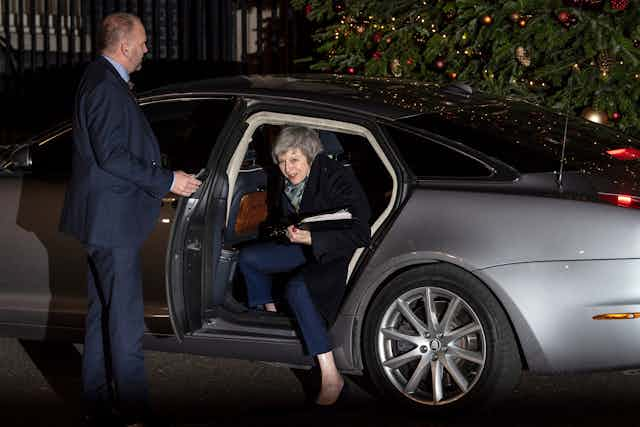In winning a Conservative Party no-confidence vote by 200 to 117, Theresa May has defeated the most serious attempt so far at ousting her as leader of the party. The effort was never likely to succeed for the simple reason that there was no openly declared challenger for the top job. Not a single Conservative MP has been willing to publicly state that they would be able to do better than the prime minister and demand the job in her stead.
The lack of a challenge after she lost the government majority in the 2017 snap election showed the reluctance of likely successors to put themselves forward. This should be seen in the context that the Conservative Party traditionally does not take kindly to its leader doing badly electorally. May’s win in this vote illustrates with blinding clarity that no one in the Conservative Party thinks they could do better in negotiating with the EU27.
In the lead-up to the vote there was plenty of speculation on what would count as a “good” result for May. However, keeping in mind all the humiliations and defeats the prime minister has already experienced, a victory in this no-confidence vote of any scale would be enough. May is now safe from a formal challenge to her position for a full year. This will massively increase her hold on the position as party leader.
Still stuck
However, even through the hardcore Brexiteers in the European Research Group (ERG) have failed in their attempt at ousting May, her victory will do little to undo the parliamentary stalemate. The result of the no-confidence vote shows that within the Conservative Party the ERG and the hard Brexiteers do not command anything like a majority. However, considering the parliamentary arithmetic, they have enough power to scupper almost any deal presented for approval to the House of Commons. The ERG and the DUP are pretty much in lockstep in their view of what is an unacceptable deal so while the prime minister may still be in office, it’s also clear that her effective power is very close to zero.

The question then is what is next for both the prime minister and her hard Brexit opponents? May now has the unappealing task of deciding what to do with her dead-in-the-water withdrawal agreement. The EU27 have made it very clear that they do not want to reopen negotiations. Even if they did there is every chance that a new agreement could be worse, especially considering France’s wish for concessions on access to UK fishing waters, and Spain’s designs on Gibraltar.
Election time?
Arguably, May’s most realistic option could be a fresh general election in which the main/only topic on the agenda would be her withdrawal agreement. That is entirely doable in parliamentary terms. It would put her internal Conservative opponents in the awkward position of effectively having to campaign against their own party, and should she not lose would give her the ability to say that she has a democratic mandate to push through the agreement. However, all ways forward have to face the fundamental fact that the March 29 2019 deadline is now uncomfortably close.
That ticking clock is arguably the hard Brexit supporters’ biggest asset. Knowing that it is extremely unlikely that any withdrawal agreement will come before parliament that could command majority support, they could simply continue to block approval and run down the clock. There are rumours that they are considering supporting a no-confidence motion against the government, working with Labour and the Liberal Democrats to force an election. That would be a nuclear option and would undoubtedly cause profound damage to the Conservative Party. And Brexiteers were moving to downplay that possibility in the aftermath of the leadership vote.
In short, while May can feel justifiably smug about having successfully faced down her opponents in the Conservative Party, the result in no way helps her find a way out of the parliamentary stalemate. The no-confidence vote hurdle has been successfully cleared, but May is no closer to solving the problem that sparked that vote in the first place.

